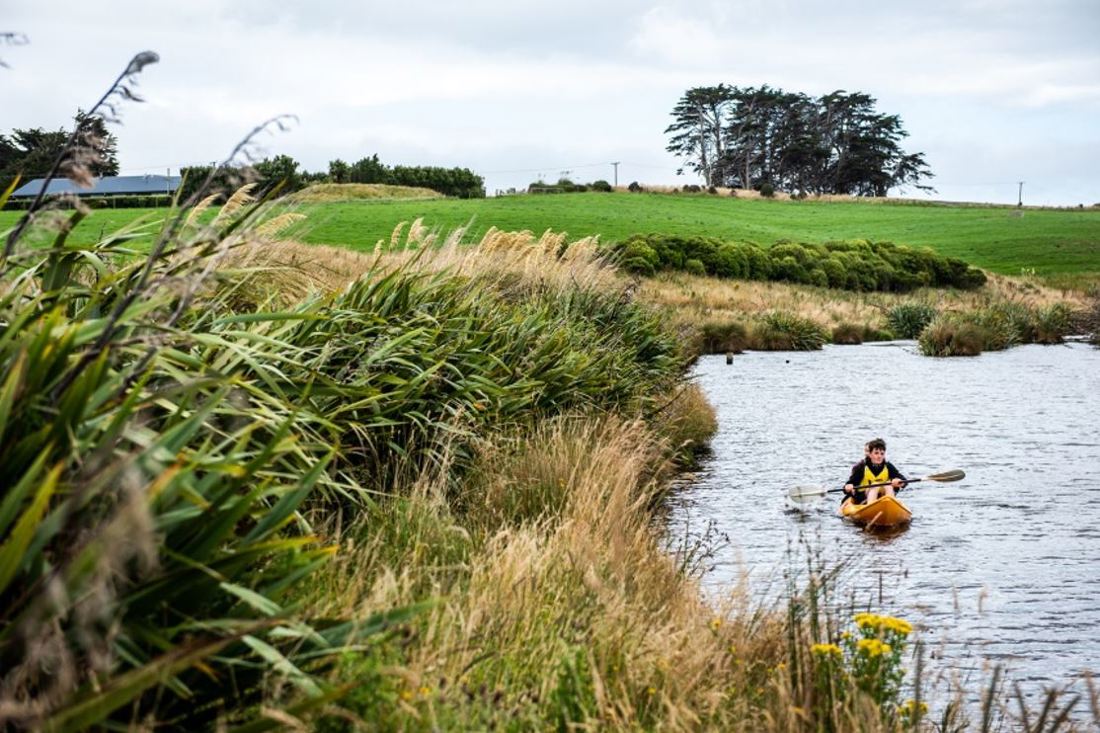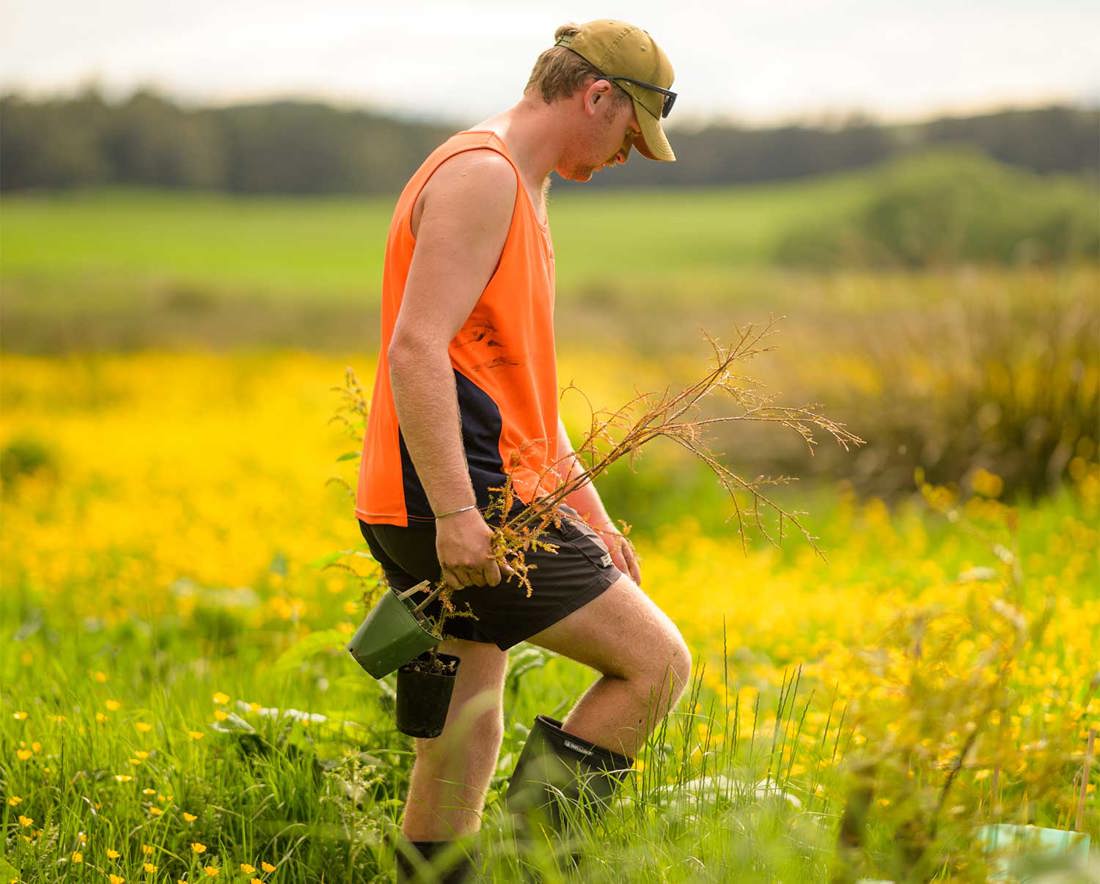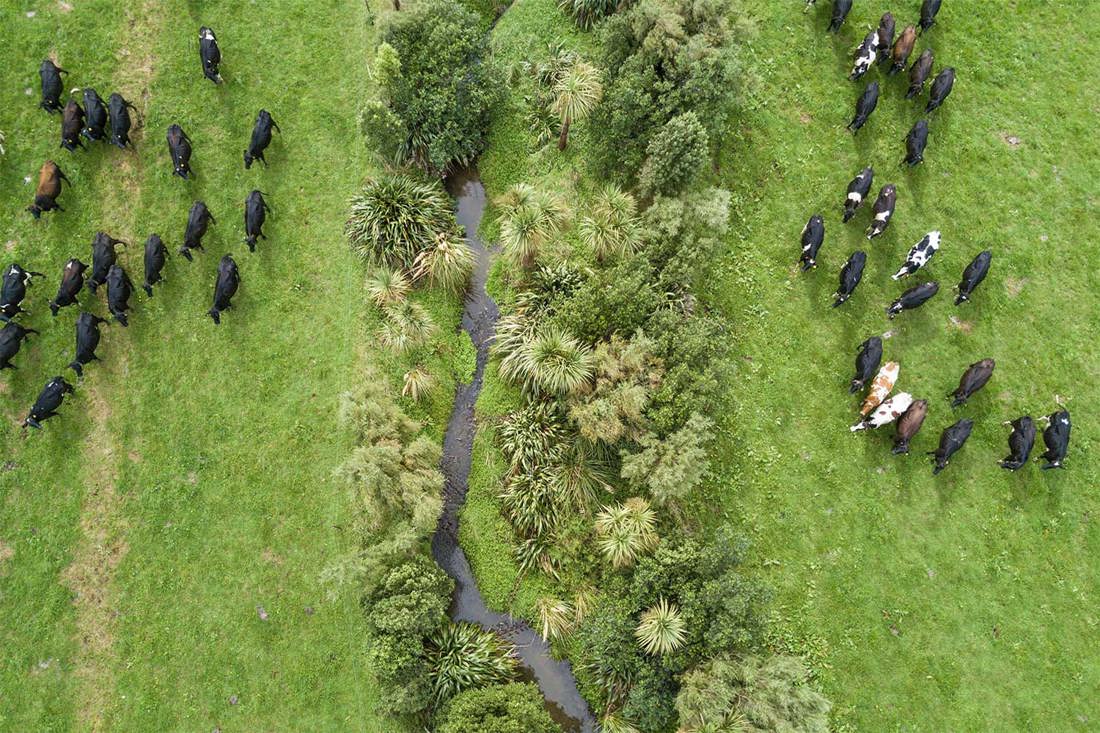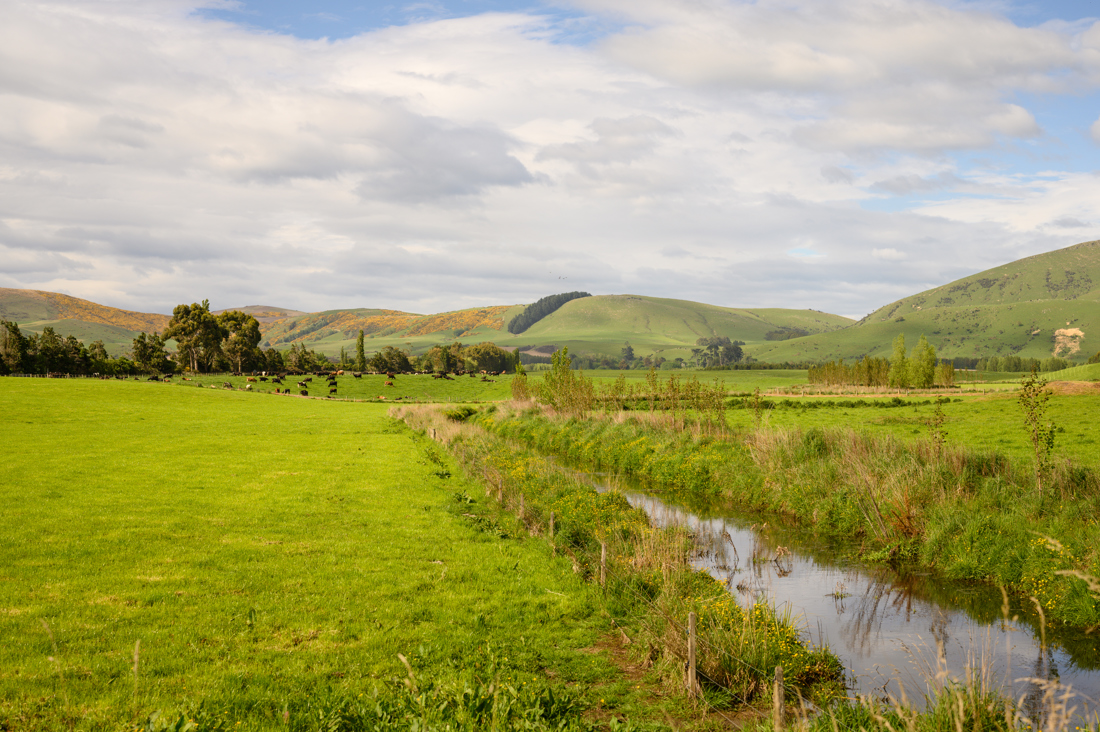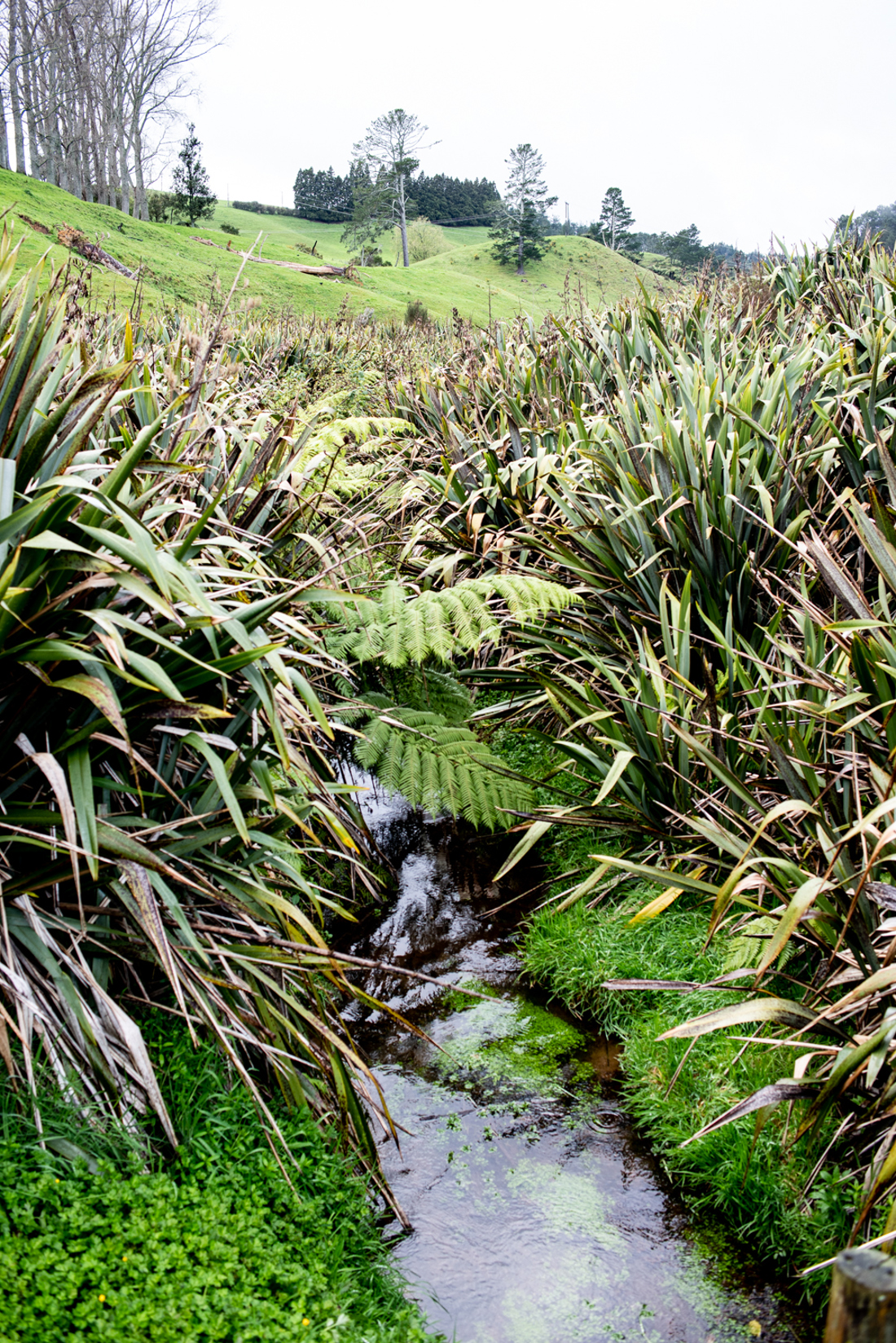Fish need to move up and down waterways to feed, breed, and migrate between the sea and freshwater to complete their life cycle. Anything that stops fish movements is called a ‘fish passage barrier’.
More than 70 percent of our native fish are threatened or at risk of extinction. Barriers to fish passage can reduce the numbers and types of fish present as they cannot access the habitats they need. For example, tuna (eels) and īnanga (the main whitebait species) need to move between the sea and freshwater to complete their lifecycles. Some barriers can cause fish to be completely absent from a waterway.
There may be opportunities on your farm to remove these barriers and help fish move freely up and down your waterways, improving not just fish biodiversity, but the ecosystem health of your waterway overall.
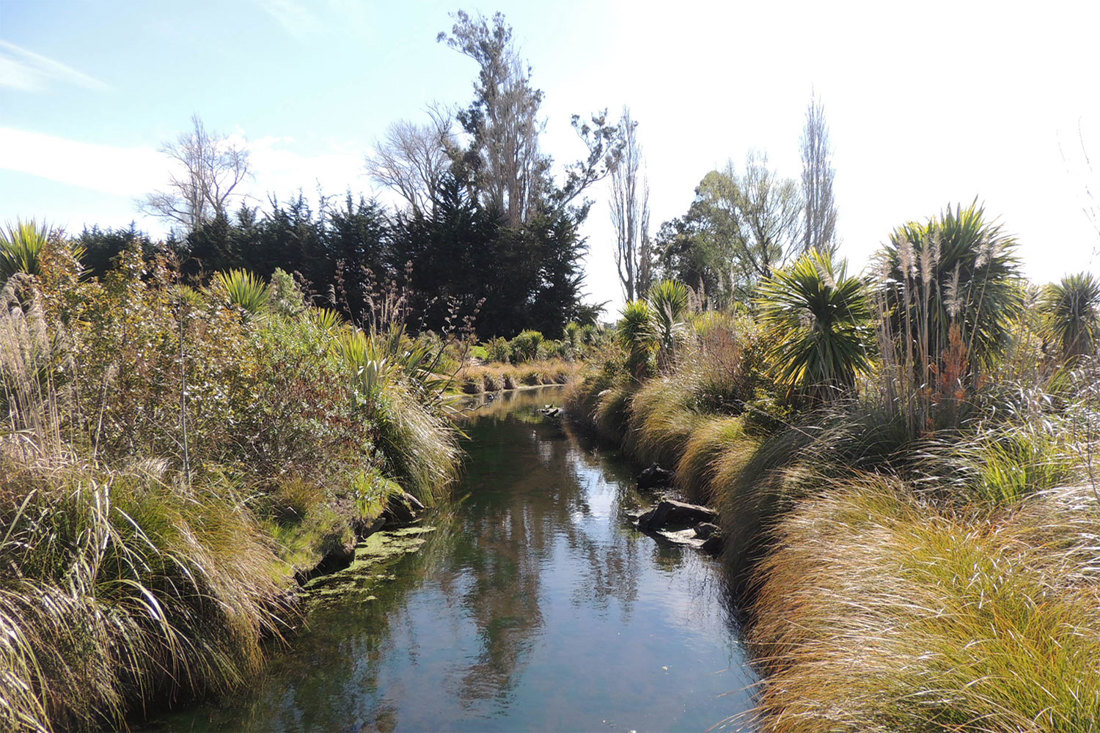
Fish passage barriers
Fish passage barriers can be manmade, such as weirs, culverts, flood/tide gates, fords and dams. They can also be natural, such as waterfalls, fast flowing rapids, and debris jams. Some manmade structures may not cause a barrier when first installed, but poor maintenance can subsequently cause them to become barriers. Some fish particularly struggle to pass structures with drops, fast water, steep gradients, shallow water depths, and no resting areas.
Not all structures automatically cause a barrier to fish movement. It depends on the characteristics of both the structure and the waterway, how the structure has been installed, and how it functions in the waterway. It also depends on what fish are expected to be present in the waterway as some fish are better climbers than others. For example, īnanga are weak swimmers and cannot climb, but kōaro and juvenile eels are so good at climbing they can make their way past big waterfalls.
Once a potential barrier has been identified, it can be assessed to see it is impacting fish passage or not. NIWA has developed a Fish Passage Assessment Tool to help with this. You may be able to do this assessment yourself, or ask an ecologist or your regional council to help you.
Fixing a fish passage barrier
How a barrier should be fixed depends on what fish you are aiming to provide passage for and how they might move through the structure and the waterway. If the structure is not needed, the best approach is to fully remove it. If the structure is needed, there are a range of options for remediation.
It is always important to check with your regional and district councils before removing or fixing a structure, as this may require consent. Councils may also be able to provide technical advice and support, and potentially funding to carry out the work.
Regulatory requirements
The National Environmental Standards for Freshwater require that all new and altered structures allow for fish passage. The structure needs to allow the same passage upstream and downstream that would have existed before its installation. For the work to be a permitted activity, there are certain requirements for structures. For more, see this information sheet from the Ministry for the Environment. The New Zealand Fish Passage Guidelines can also provide some useful information.
You might also like to consider including fish passage barriers in your Freshwater Farm Plan, with actions to work towards addressing these barriers.
